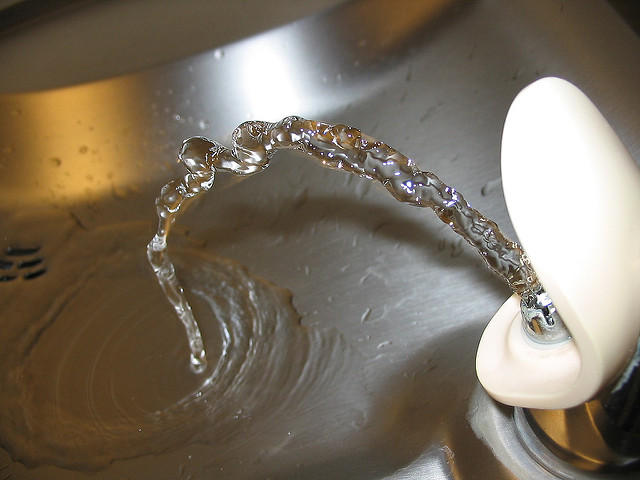Southold replacing nine water taps after finding traces of lead


A water quality test recently performed at Southold schools found that nine of the district’s water fountains and sinks contained traces of lead, district officials announced Thursday afternoon.
Superintendent David Gamberg said in a letter that 78 samples were tested in the elementary school and 66 drinking water sources were tested in the high school. One source at the elementary school and eight at the high school had lead levels above the Environmental Protection Agency’s standards, according to a letter posted on the district’s website.
After getting the results, the district all water sources found to have levels of lead above EPA standards, he said, and have already replaced six of the nine outlets. He said the remaining three outlets are expected to be replaced before the start of school.
The district has also placed three water bottle filling stations in both buildings, all which tested below EPA recommended levels.
Enviroscience Consultants, Inc., an environmental consulting and testing agency hired by the district, collected samples through a three-step process, according to a letter posted on the district’s website.
The process included testing from an initial water draw, which means not allowing the water to run prior to taking the sample, then a 15-second draw and finally a 60-second draw, or flush test, which means collecting a sample after allowing water to flow through the system, the letter states.
Currently, school districts are not mandated to conduct testing of water sources for lead.
As a national discussion about water quality — specifically in relation to lead levels — grew in the aftermath of the water crisis in Flint, Mich., Southold and other local school districts began looking internally, testing their own water for the hazardous metal.
Mr. Gamberg, who is also superintendent of the Greenport school district, said a water test has been conducted and found that 19 of the districts samples contained levels above EPA recommendations. Thirteen of the fixtures are slated to be replaced before the school year and the other six will no longer be used, he said.
Over at the Mattituck-Cutchogue school district, business manager Michael Engelhardt confirmed 31 samples were tested in May — 11 at the high school and 20 at the elementary school. Those results all came back negative for levels of lead that exceed the EPA standard, he added.
Osyterponds Elementary School also recently tested their water sources, all which came back negative as well, superintendent Richard Malone said.
Four out of Riverhead school district’s 250 taps tested positive for having traces of lead above the EPA’s standards and a water quality test at the Shoreham-Wading River school district found five samples also contained lead.
Both districts are in the process of replacing those water sources and expect work to be completed prior to the start of the school year.
The EPA currently recommends that action be taken to address water sources containing more than 20 parts per billion of lead, according a letter the Greenport school district posted on its website.
The EPA states that ingesting lead can be detrimental to both children and adults, although it’s significantly more harmful to children.
“In children, low levels of exposure have been linked to damage to the central and peripheral nervous system, learning disabilities, shorter stature, impaired hearing, and impaired formation and function of blood cells,” according to the agency’s website.
Lead exposure can also cause anemia, slowed growth and hearing, and behavior and learning problems in children. A pregnant woman with high levels of lead in her bloodstream can experience premature birth or reduced growth of the fetus, the EPA says.
Adults exposed to lead can suffer from decreased kidney function and reproductive problems.








